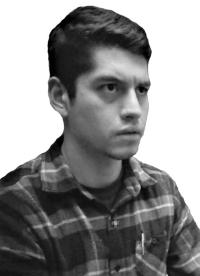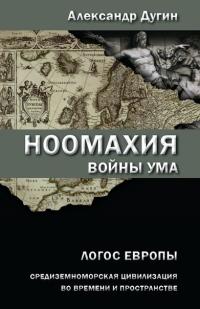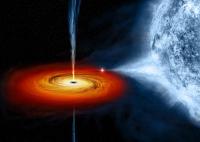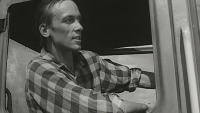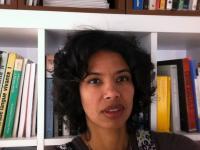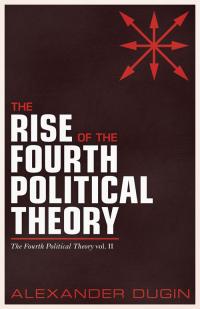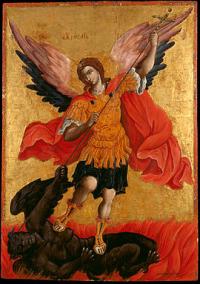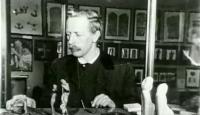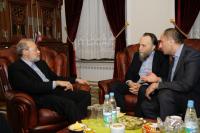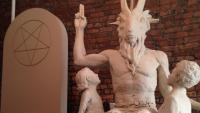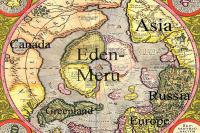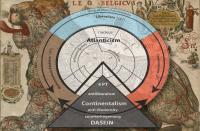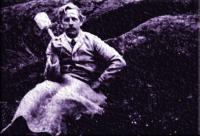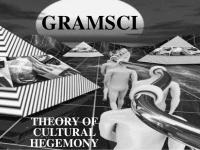CRISOLISM AND THE RELEVANCE OF DUGIN´S FOURTH POLITICAL THEORY FOR PERU AND LATIN AMERICA
Peruvian social scientists are reducing their work to the strict academic terrain, this relationated with the fear of social rejection and labor ostracism, which would imply their participation in political projects and social reforms, this situation is generating that, today, political parties are in a lack of doctrine, strategies and coherent programs. The decline of the Peruvian political parties, we endorse, is also determinate by the flight of thinkers and social scientists from them.
Due to this situations, and in order to amend them, investigations are being carried out in Peru, in such areas as political philosophy, metapolitics and geopolitics. For the sake of identifying the real obstacles that interfere with our progress as a nation, and to give with this the necessary tools for the institutionalization of a political project. It is the return of social scientists to the political arena, since today, far from the humanities, the Peruvian political parties are only political companies, prey to corruption, improvisation and clientelism.
The Logos of Europe: Catastrophe and the Horizons of Another Beginning
Modern European civilization is the historical continuation of Mediterranean civilization. The Indo-European element is predominant in this continuity, as the Indo-European tradition makes up Europe’s main linguistic and cultural matrix. If we recall Dumézil’s reconstruction of the trifunctional system here, then we immediately obtain a sociological map of Europe, the social structure of which is dominated by a constantly reproduced principle of three prevailing castes: priests, warriors, and producers. Indeed, we encounter none other than this stratification of European societies at the most different historical stages and under different names and titles.
The classic expression of this order was the ancient epoch of Mediterranean societies beginning with the Achaean conquests and Homeric Greece. Such a system was characteristic of Ancient Greece and Rome with the exception of periods of decline distinguished by a strengthening of the political positions of “urban dwellers”, who represented a mixture of higher castes with uprooted peasants that gave birth to a new type of merchant hitherto alien to classical Indo-European societies. This type of merchant could have taken shape through the degradation and materialization of the warrior caste (which Plato describes in his Republic as the phenomenon of timocracy), or from below through a specific deviation from social type on the part of former peasants or urban artisans. It cannot be ruled out that this was the result of influences that were altogether foreign to the Indo-European cultural circle, such as Phoenician or, more broadly, Semitic cultures, for whom trade was a widespread social occupation. In the city-states of Greece, “urban dwellers” and “citizens”, i.e., “townspeople”, formed a specific social milieu in which the three classical functions of Indo-European society found parodical manifestation. In the very least, this is what Aristotle presented in his Politics. The authority of king-priests (the sacred monarchy) transformed into tyranny. The domination of the warrior aristocracy gave way to domination by a financial oligarchy. The organic self-government of ethnically homogeneous and solidary communities (polity) became “democracy”, or the power of the sporadic and disparate crowd unified only by territory of urban residence.
CHRISTIANITY AND SCIENCE
If one takes the third position on religion and modern science, life will become difficult (perhaps even unbearable). In this case, we must not only distrust the ideology of the modern (definitely non-Christian, often directly anti-Christian) society, but also the world itself, which, if we think about it, is pushed onto so heavily onto us by the entire structure of upbringing, education, study, and culture that we are convinced that it is reality, nature, existence, truth. Once can debate an ideology (although this is difficult, if it is a totalitarian one like all Modern ideologies: communism, fascism, and the most totalitarian one of all, liberalism!), but to distrust one’s own sensory organs, to see that which ‘isn’t’ behind ‘natural’ phenomena (as was said to us by our parents and teachers), i.e. the cosmological power of angels and demons is a direct road to insanity.
I do not know the answer to this question, as it can neither be easy nor understood. I can only express certain assumptions without being confident in neither their effectivity nor their ability to change anything.
First, we must give ourselves the task of fundamentally researching the philosophy of Plato and Aristotle. This demands effort, but it is the foundation of Christian thought. Without Plato, the fundamental theological theses of the Cappadocian school, or even the most fundamental teachings about the Trinity, creation, etc., to say nothing of the Aeropagites, asceticism, or hesychasm would have no foundation at all. The fundamentals of Christian theology were developed by the Platonists. And it is Platonic cosmology (with Christian corrections) that was patched into this philosophy. In the Christian context, this corpus is most clearly represented by the Aeropagites, in the West by Scotus Eriugena.
IN DEPTH: Nationalism in the Third World and the Idea of a Fourth Political Theory
e are talking about ideologies such as Chavismo in Venezuela, undoubtedly patriotic socialist doctrine, based on the political creativity of Hugo Chavez, who managed to forge a Fourth Way in relation to liberal-capitalism, communism and chauvinistic nationalism, reconciling its Peronist and Velasquist influences with perspective of a Communal State based on the productive autonomy of the workers. Your purpose? As outlined in his Plan de la Patria, establishing a multipolar and pluricentric world order and effectively building a socialism based on patriotic values in Venezuela.
TRADITION VS TRANSITION? Ft. Alexander Dugin, Russian Philosopher
THE ECONOMIC PERSONALITY
The pure individual must be a carrier of physical immortality, as there will be nothing in him that could die. There should be no hint of structure or filiation in him. He should be fully liberated of all forms of collective identity and also of existence. This is the ‘end of economics’, the ‘death of the person’, while at the same time being the flowering of chrematistics and the immortality of the (post-human) individual.
The seed of the human rots, but in its place there is no resurrected life, but a simulacrum, an electronic Antichrist. Capital is etymologically related to head (the Latin caput), i.e. capital has historically been a preparation for the coming of artificial intelligence.
So what does the economic aspect of the Fourth Political Theory, which challenges liberalism in its final (terminal) stage, consist of?
We must theoretically affirm a radical return to the integral worker, to the economic person against the disintegrated capitalist ‘order’ (organized chaos to be more precise) and the chrematistic individual. This means radical de-urbanisation and a return to agricultural practice, to the creation of sovereign farmer’s communities. This is the 4PT economic program: the resurrection of economics after the dark night of chrematistics, the rebirth of the economic person from the abyss of individualism.
THE REALM OF THE FOURTH POLITICAL THEORY: CONTRIBUTIONS
According to Ultra-modernity, everything that is said now will be claimed wrong within, say, twenty years. Remember, though, that you will be a grandparent yourself. So, are you ready to be thrown in the trash can in your days of old? Or will you simply refuse to grow old, considering aging a disease and trying to stop it? Because these are the days we are living: we will have to work hard for the right of being both right and old.
There is a very simple test that you can make, even if you do not know much about Geopolitics or Political Philosophy, to see on what side you are. It goes like this: if your people/territory/identity accepts most tenets of the Western culture, will the best ways of your grandparents fade or will they blossom?
The Rise of the Fourth Political Theory
The sequel to the bestseller The Fourth Political Theory, expanding further on the fourth political theory. All the political systems of the modern age have been the products of three distinct ideologies: the first, and oldest, is liberal democracy; the second is Marxism; and the third is fascism. The latter two have long since failed and passed out of the pages of history, and the first no longer operates as an ideology, but rather as something taken for granted. The world today finds itself on the brink of a post-political reality — one in which the values of liberalism are so deeply embedded that the average person is not aware that there is an ideology at work around him. As a result, liberalism is threatening to monopolise political discourse and drown the world in a universal sameness, destroying everything that makes the various cultures and peoples unique. According to Alexander Dugin, what is needed to break through this morass is a fourth ideology — one that will sift through the debris of the first three to look for elements that might be useful, but that remains innovative and unique in itself.
Peasant as total worker
Three Political Theories and Three Horsemen of Apocalypse
"POST-TRUTH” AND THE TRUTH OF THE POLITICAL: FREEDLAND VS. DUGIN
Unlike Dugin, for Freedland there is only one truth in the world, which cannot be questioned at all. The British journalist completely ignores the so-called autonomy of the political, such as the fact that politics is not based on rationality, but on irrationality. As we learn from the German jurist Carl Schmitt, politics means acting to defend or impose a particular type of collective existence, beyond what is morally right or wrong and what is objectively true or false. Freedland is very surprised by the actual trend towards a «deeper and more bitter partisanship», but this fact only means that what is happening in countries like his own it’s simply the return of politics in contexts from which it was almost gone. Politics divides people into different groups, which are aggregated around a particular “speech”, or a particular “narration”, or, as Dugin teaches us, around a particular “truth”. To Trump’s supporters (like those of any other political leader) doesn’t matter if what their leader says is true or false; they only identify themselves in him and in his political view. So politicians like Trump are neither “engaging in post-truth politics” nor lying, but they are only making politics. Furthermore, Freedland should understand that in politics there are indeed no referees, but only players. In fact, there are referees only when there is someone who commands on all the others and who has the monopoly of the truth.
Revealing Traditionalism
The Ways of the Absolute was written in 1989. Its main task was presenting the foundations of Traditionalism, exhibiting how Tradition understands the most important metaphysical problems, and on what philosophical principles the sacred worldview is built. We considered the present work to be a kind of introduction to Traditionalism, as transmitting into the Russian context the main lines of such eminent modern Traditionalists as René Guénon (the founding father of this tendency), Julius Evola, etc. We pursued an altogether definite purpose, and it predetermined the topics selected, the methods of presentation, and the emphases. It was extremely important for us to at once put Traditionalist through in its proper context, and show its radical non-conformism, its rigid alternity to academic, “humanitarian” and profane philosophical trends in modern culture. Traditionalism is not a history of religions, not a philosophy, not a structural sociological analysis. It is more of an ideology or meta-ideology that is totalitarian to a considerable extent and places rather harsh demands before those who accept and profess it. Either man breaks with the totality of the worldview cliches of modernity diffused throughout his environment, completely revises his views and positions, investigates the profane genesis and then rejects them all at once in order to accept the norms of Tradition with perfect confidence and strict conviction, or he will remain essentially outside of it, outside the sacred fence, in the Eleusinian swamps of the modern world in which there is no fundamental difference between highbrow professors, philosophers, and the obedient, absolutely unreflective mass of laymen, including even those intellectuals who for “academic” reasons are interested in various “extravagant” subjects, such as theology, rituals, symbolism, traditional societies, etc.
Christian Metaphysics: The Essence of the Problem
Christianity is that tradition whose metaphysical dimension has been studied least of all. This is quite a paradox since one would think that such a deep study of Christianity, the religion of the West, would attract all those interested in metaphysics and who, following Guénon, are trying to make sense of the most profound aspects of Tradition. Nevertheless, the disputes surrounding Christianity in Traditionalist circles are, as a rule, limited to fairly secondary, practical issues regarding the virtual initiation of the sacraments, the absence of an idea of cyclical time, etc. In all of this, one can see a tacit consensus among Traditionalists that Christianity is nothing more than a reduced, incomplete tradition whose esotericism has been practically lost, and whose metaphysical content cannot be detached from the dense veil of exoteric scholastic theology and the hazy subjective intuitions of mystics. All attempts to identify any consistency between the basic principles of Christianity and the conceptual categories of other, more metaphysically developed traditions (primarily Hinduism) have yielded rather poor results and have been based on strained interpretations and biased urges to arrive at any cost at conclusions which match Guénon’s own ideas.
Orthodoxy, for its part, despite having preserved ontological and metaphysical wholeness, from a certain time onward could no longer assert its metaphysical content (i.e., actual Christian metaphysics) in clear categories. Shortly after the “Palamite disputes” when Orthodox esotericism experienced its last dazzling rise in history, this line was somewhat marginalized and “frozen”, as priority was given to the exoteric sides of the Church. In the late 19th and early 20th centuries, many Russian theologians and even secular philosophers, intuitively surmising the special metaphysical nature of Orthodoxy, attempted to formulate certain principles for reviving the forgotten dimension of this tradition. However, most of these attempts did not yield serious results since none of them were familiar with the works of Guénon. Hence why only now, in our opinion, is it possible to acquire adequate knowledge of the most important proportions of the structure of fully-fledged metaphysics.
Herman Wirth and the Sacred Proto-Language of Humanity: In Search of the Holy Grail of Meanings
In Wirth’s view, the main key to understanding this language, and all existing languages and traditions, is the year. The year and man, the year and God, the year and nature, the year and time, the year and space are, in Wirth’s view, synonymous concepts. Man is the embodiment of condensed time. Time in and of itself is a divine manifestation.
The northern, polar cycle is the highest knowledge and, as follows, everything else is to be explained through the calendar. Special attention should be paid to the natural features of the North Pole. We know that a day there lasts not 24 hours, but six months, as does a night. For example, such a notion as the “midnight sun”, which is addressed in many of the Dionysian mysteries and is a generally important element in multiple sacred theories, acquires an entirely natural sense in Arctida – natural-magical meaning. This is the sun that shines at midnight at the North Pole during the summer solstice. Indeed, there is sun, and there is midnight. The memory of this midnight sun, like the memory of the primordial homeland of our ancestors, has been preserved in traditional models and been passed down from generation to generation in the form of legends and stories.
EURASIAN LAUGH
Now I am approaching the end of my Magnum Opus Noomahia. It should consist of 20 big volumes dedicated to different civilisations. 18 are already finished and published. That is most important for me because it is a sort of Encyclopaedia of Multipolar World or else Anti-Encyclopaedia of Enlightenment, or Counter-Modern Encyclopaedia deconstructing the eurocentrism and Western Modernity and affirming the right of the people to create their own civilisations basing on their own values. It is the plan for global radical revolution against the Modern World, globalism and the domination of the West. But at the same time it is defence of the deep - Premodern — european identity destroyed by the capitalism, liberalism and anglo-saxon ideological dictatorship.
My life is the proof that ideas do matter. More than anything else in the life. More than life itself.
I will fight for my ideas and for the revival of deep Russian identity till the end. And we will see who will laugh the last. So I strongly believe in the final Eurasian laugh over the smoking ruins of the present world that should end.
Horizon of the Ideal Empire
It will be a huge Empire. The richness of the landscape and the diversity of the polities will be intrinsic to the state. The Empire principle must be rehabilitated. Besides the trifunctional system (philosophers, warriors, and farmers), the Empire can include enclaves of a variety of creatures from Amazons to two-headed, bird-legged, and headless beings, gypsies, Evenki, etc. There could even be a mermaid republic or Veche forest gatherings governed by an assembly of Domoviye and Leshie. We can also imagine a congress of Angels or Tatar Kurultai.
A plurality of types of political and anthropological creativity should be encouraged.
TV and the press will be cancelled, as they are always spouting some kind of meaningless nonsense.
Clothing will have its own meaning. The body is the wrapper of the eidos, and the clothes are the wrapping of the body. Everyone will have different clothes, but all colorful and astonishingly beautiful, so that people pay attention to them. People will notice clothes and judge by clothes. There will be an absolute cult of clothing. People will spend most of their time getting dressed and changing.
Food will be the most ecologically pure, and distributed freely, as a gift. There will be an exceptional lot of sausage, cheese, and hazelnuts in the Empire.
THE FOURTH POLITICAL THEORY AND THE PROBLEM OF THE DEVIL
The most important point is that 4PT is based on the fact that the choice of paradigm is not within the three political ideologies (the Logos of the Great Mother), but within the three Logoi of the political philosophies of the Father (Platonism), the Son (Aristotelianism), and the Mother (materialism). This is a free choice in which modernity is nothing more than one option, and far from all.
The political philosophies of the Father and the Son (or their alliance) are objects of free choice. This is a task, not a given. It appears that we ended up in modernity because we forgot that the political philosophy of the Father and the political philosophy of the Son need to be constantly affirmed anew with each new generation and new person. We took them for something guaranteed, something taken for granted.
As soon as even a vertically-oriented political system becomes inertia or something ready-made and given, then it begins to fall, to collapse. If instead of as a free establishment we take the monarchical, imperial, traditional, and caste vertical to be a fact, something given, and once we no longer re-affirm such at each stage, then sooner or later we will fall into the dustbin of modernity and its last logical accord - the political philosophy of the Mother.
The Metaphysical Roots of Political Ideologies
Characteristic of “servants of Magical Matter” is pure agnosticism, i.e., a third way between Gnosis and Faith. The agnosticism of mystical materialism is conditioned by the inadmissibility of the subject questioning knowledge, since the subject, as part and parcel of the cosmos, is merely one of the facts of this cosmos and nothing more, thus the subject’s reflective capacity (its mind) cannot add or subtract anything from the flow of the cosmos. In this view, knowledge is identical with cosmic fact, but insofar as the cosmos is in motion, knowledge is identified with practice, i.e., it is simply discarded. In other words, agnosticism is the result of the absence of the pair of “knower” and “known” which is necessary for knowledge itself. For the proponents of Magical Matter, the absolute surface of the world coincides with its absolute depth. Here it would be interesting to recall Nietzsche’s aphorism regarding how “a woman needs to find depth in her superficiality.” Such an analogy is no accident, since the ideology of Magical Matter bears an openly gyneocratic, matriarchal character, in some sense being a projection of the female subconscious closed to itself.
POST-ANTHROPOLOGY
A concrete (phenomenal) society always consists of two parts - the aboveground and underground. The aboveground part is what we normally term “society", meaning a sphere of rational activity where logos (λόγος) prevails. This is the domain of the “diurnal". The underground part is the dark, underwater island of the collective unconscious, the region of the social night (the “nocturne”), where myth (μύθος) rules.
For some time, progressivist science believed that these two parts were situated in diachronic order. In ancient times (and among “primitive” peoples, the unfortunate “residue” of ancient times), myth was predominant. But the progress of civilization gradually supplanted the mythological order and replaced it with an order based on logos. The community, or Gemeinschaft, is superseded by society, or Gesellschaft (F. Tönnies). But this optimistic exaltation did not last long. Whereas blind faith in purported progress reigned almost unquestionably in 18th-19th century Western Europe, the subconscious, where the eternal and unchanging laws of myth predominate, was discovered by the beginning of the 20th century.
Encounter with Heidegger: An Invitation to Journey
Heidegger is universally recognized as a great philosopher of world history. No one seriously contests this, but someone calmly passes by, relying on other trends in philosophy, while someone responds keenly to his message, using his terms ("Dasein", "existential", "Angst", etc.) and allowing himself to be carried away by his thoughts.
A different, special, exclusive place in the history of philosophy that can be set aside for Heidegger should be recognized in the case that we fully trust Heidegger, immerse ourselves in his thinking, and make him our highest authority. In other words, Heidegger in the space of Heideggerianism will differ essentially from Heidegger in the average and conventional history of philosophy. In this case, Heidegger will be revealed not only as a great philosopher, on par with the other greats, but as the greatest of them all, occupying the place of the last prophet, concluding the development of the first stage of philosophy (from Anaximander to Nietzsche) and serving as the transition, the bridge to a new philosophy, which he only anticipates in his works. In that case, Heidegger is revealed as an eschatological figure, as the final interpreter and clarifier of the deepest and most enigmatic themes of world philosophy and the creator of a radically new thinking. In this case he can be viewed as a figure of the religious pantheon, as an "envoy of being itself", a prophesier and preparer of the greatest event, in which the old history of the European world will end and a new one, which has never been hitherto, will begin.
It seems to me that the second approach is more productive for a true understanding of Heidegger (even if at some time, in the distant future, it will be revised). It allows for full and complete immersion into Heidegger's thinking, without hurried attempts at interpreting him through appeals to other authorities (and to their separate traces in our consciousness) and allows Heidegger to communicate to us without hindrance what he intended to communicate. And only after accepting this message in its main features and believing in its significance and inevitability can one, if need be, take a certain distance in regards to it.
Fourth Political Theory: shortest presentation
The problem is where can we find the fulcrum? The Modernity and Post-Modernity - precisely by means of Third Totalitarianism (this time liberal one) - have destroyed already the humanity and replaced it by the assembly of individuals (human rights doctrine). Refusing normative subject of all-pervading liberalism (individual and - in the near future - post-human species) we are in the void because liberalism doesn’t accept institutionally (!) any form of non-individual onthology and anthropology. And the pre-modern version of subject, of human nature are considered to be obsolete and miserable – in the extreme case criminal. If we insist nevertheless they will qualify as the residui and treat us in the same manner as in the first stage of Enlightenment - simply killing us as Jacobins and bolsheviks killed the Christians priests and princes. May be it is an option for certain men and women. The way of martyrdom is great path.
But there is other solution. Not being able to certify our own existence in the conceptual field of totalitarian liberalism we can make appeal to Heideger's concept of Dasein. When the concept of human being is obligatory fake and the liberal totalitarian culture splits the human figure more and more depriving it of any order or unity as well as of any collective identity (more than that --depriving it of any identity at all) Dasein nevertheless is here - it is always here or rather t/here. It is here - existing in authentic or inauthentic way, but it is here! So 4PT invites to take Dasein as the axial fulcrum when everything else is missing. The return to the Tradition and to the Eternity can be accomplished neither by individual nor by class or nation. Dasein is the ontological root of the human being, the nucleus of Being. Dasein can be put in the wrong way of functioning but still it is present. So it is our final argument and the main feature of 4PT. Fourth Political theory is existential. And starting from Dasein we can make the eschatological leap to the Tradition. Else we would lack the foothold. Traditionalism is to be existential otherwise it will be but one simulacrum more.
Herman Wirth: Runes, Great Yule, and the Arctic Homeland
There exists no greater mystery in human existence than the mystery of life and death, dying and becoming. For man, the Year is the supreme Revelation of divine action in the Universe. The Year is the expression of God’s providential cosmic law, in accordance with which occurs the becoming of the world in the infinite and everlasting return. The most magical and profound phenomenon before us in nature is the Year of God. A number of days makes up the Year, and in each of these days is opened the image of the Year: the birth of the Light from which comes all life, its climb to the highest peak, and its descent, death, and sinking, only to rise again. The morning, noon, evening, and night in a day correspond to spring, summer, autumn, and winter in the Year.
THIRD WORLD WAR: THE BEGINNING?
What happened on April 7th, 2017 could be the beginning of a Third World War. As a rule, nobody wants war but, alas, wars happen, and sometimes world ones. Therefore, I posit that first and foremost, as in the case of any disaster, it is necessary to remain calm and gather one’s thoughts.
On April 7th, 2017, for the first time in the years since the beginning of the conflict in Syria, the US Air Force launched a massive Tomahawk missile attack at a Syrian airbase, i.e., at us. Why did we not use a missile defense complex? According to one theory, we we lack a sufficient number of them to repulse a full-fledged attack by US troops, as they are designed primarily against the missile attacks of other potential enemies. The second theory is that Moscow did not dare give the order since such would mean the irreversible beginning of war with the US. Washington dared to, and knew what it was doing. We didn’t. Before proceeding to forecasts, it is worth once again examining the context, the starting conditions of what might become (though still might not) the Third World War.
Counter-Hegemony in the Theory of the Multipolar World
The classical realists use the term “hegemony” in a relative sense and understand it as the “actual and substantial superiority of the potential power of any state over the potential of another one, often neighboring countries.” Hegemony might be understood as a regional phenomenon, as the determination of whether one or another political entity is considered a “hegemon” depends on scale. Thucydides introduced the term itself when he spoke of Athens and Sparta as the hegemons of the Peloponnesian War, and classical realism employs this term in the same way to this day. Such an understanding of hegemony can be described as “strategic” or “relative.”
In neo-realism, “hegemony” is understood in a global (structural) context. The main difference from classical realism lies in that “hegemony” cannot be regarded as a regional phenomenon. It is always a global one. The neorealism of K. Waltz, for example, insists that the balance of two hegemons (in a bipolar world) is the optimal structure of power balance on a world scale. R. Gilpin believes that hegemony can be combined only with unipolarity, i.e., it is possible for only a single hegemon to exist, this function today being played by the USA.

